

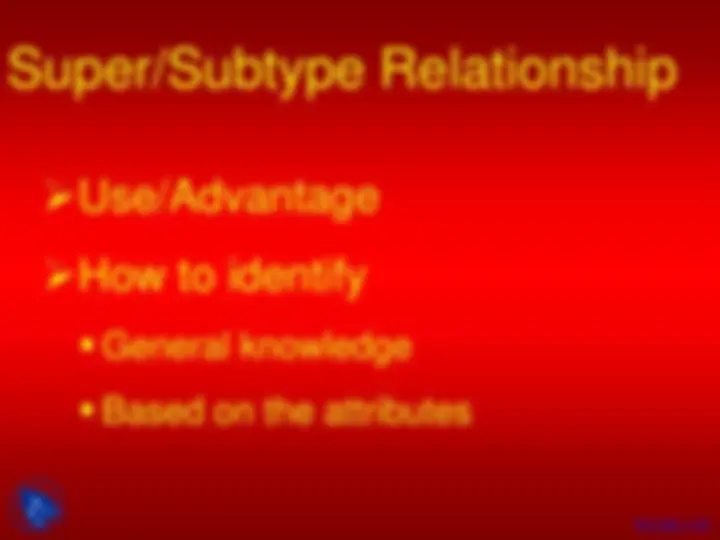



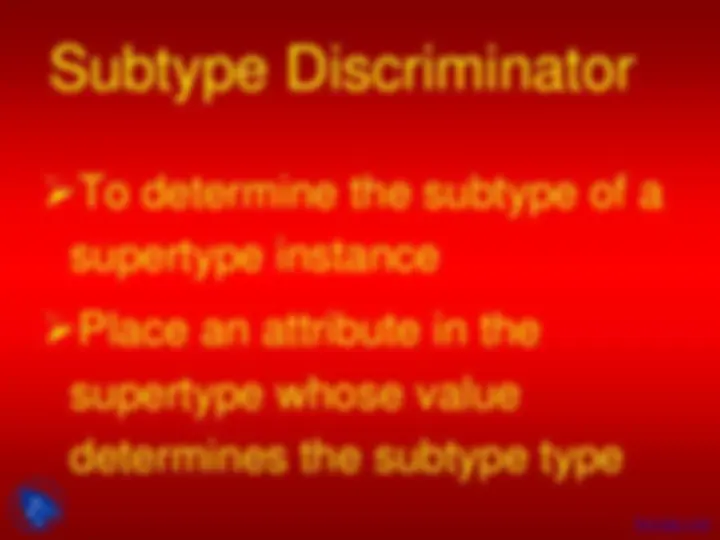
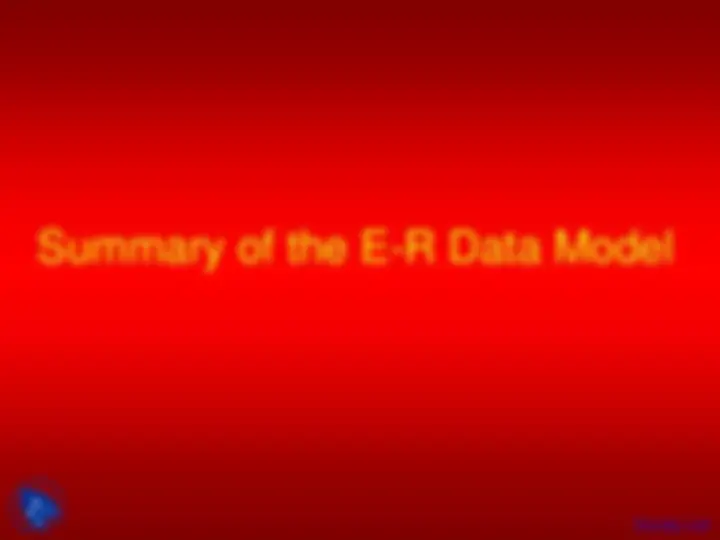
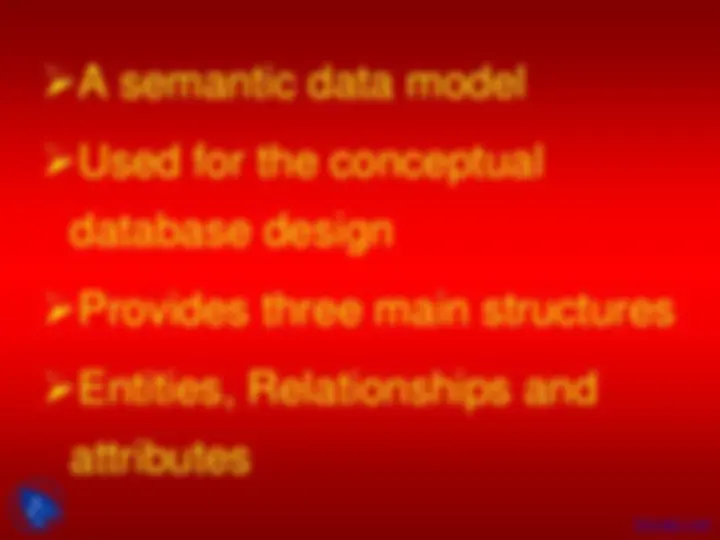
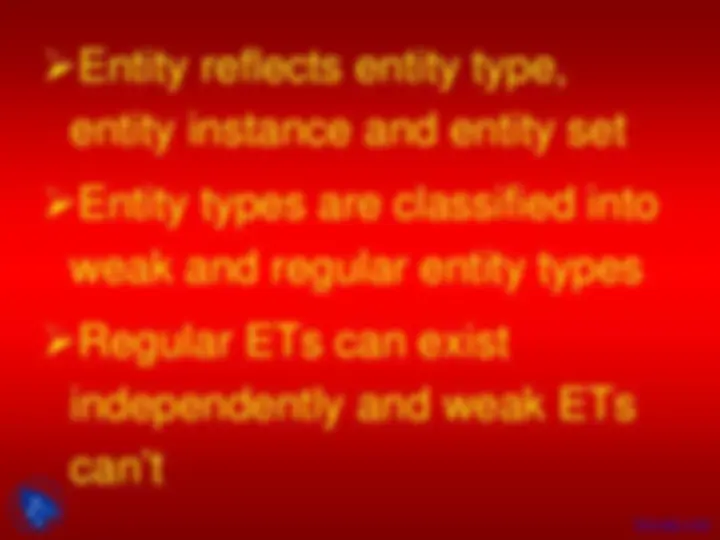
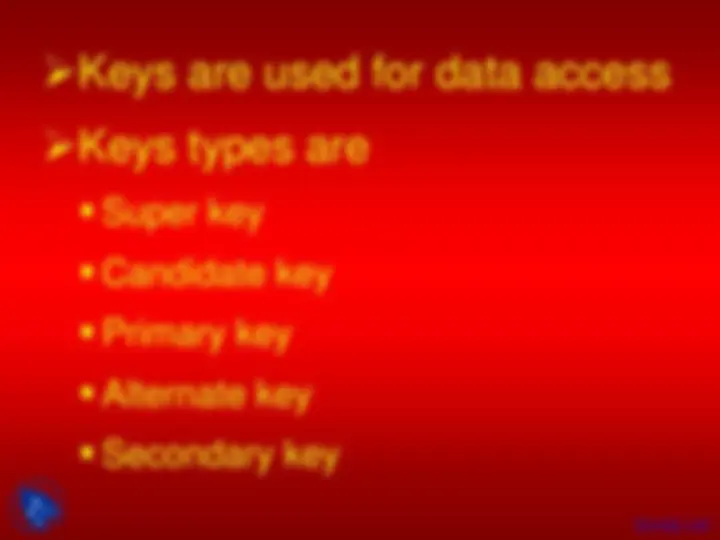
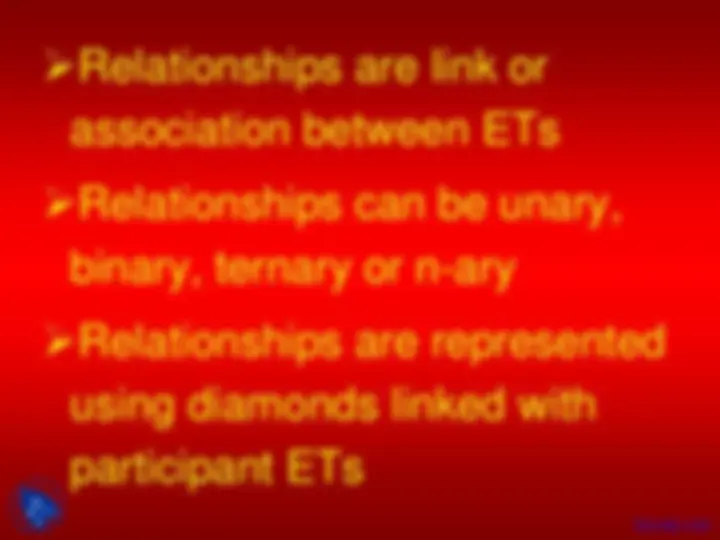
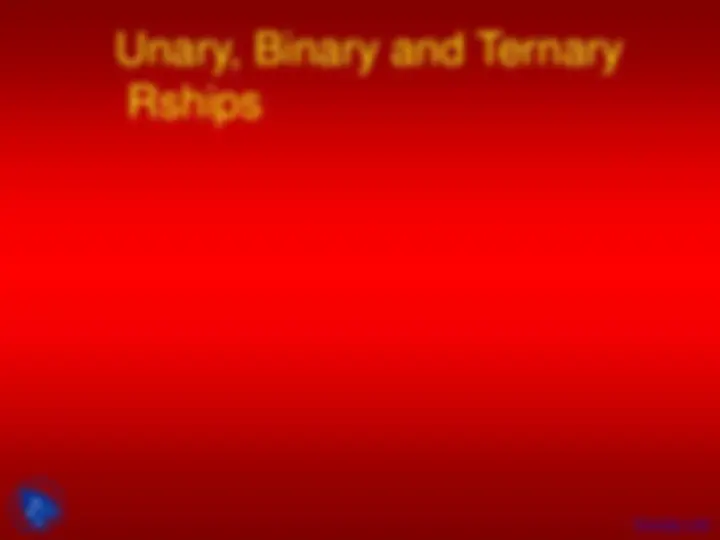
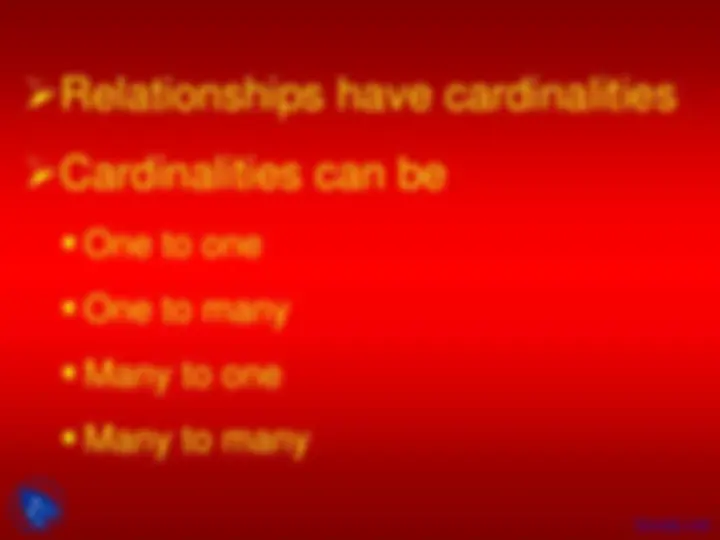
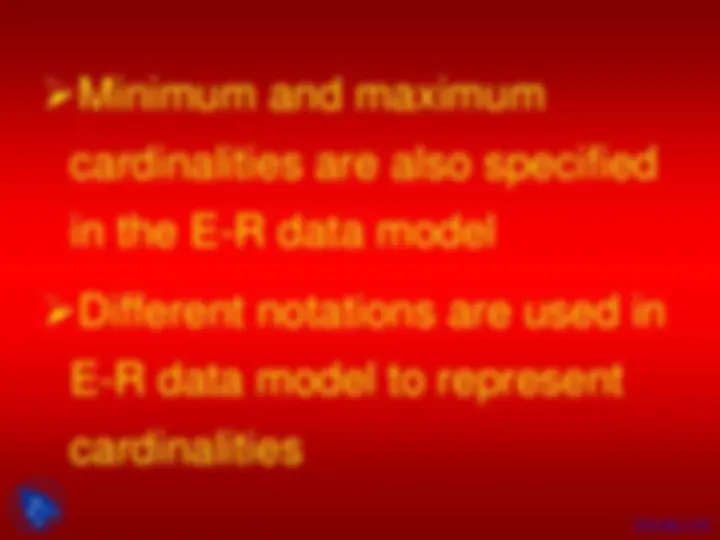

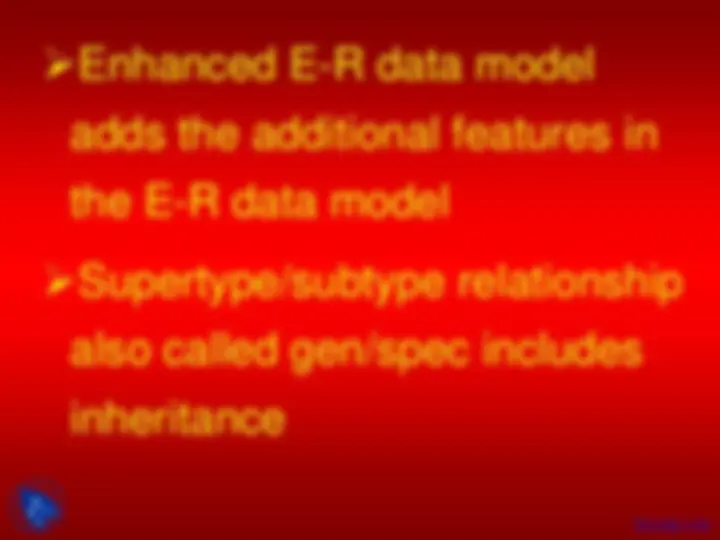

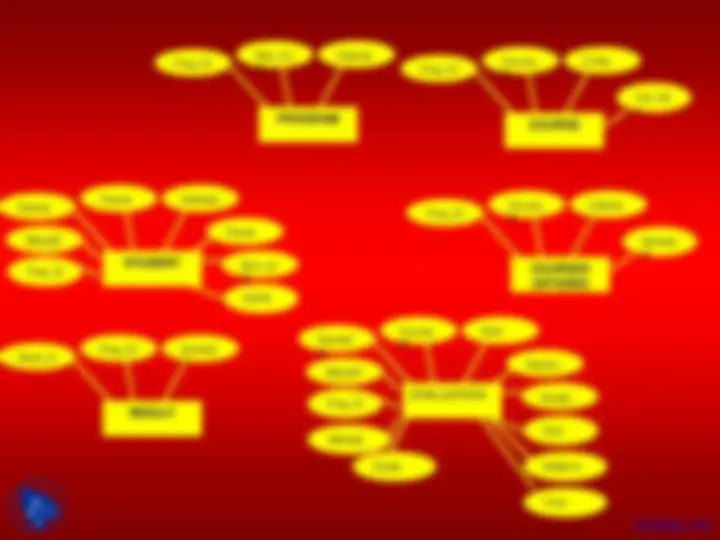
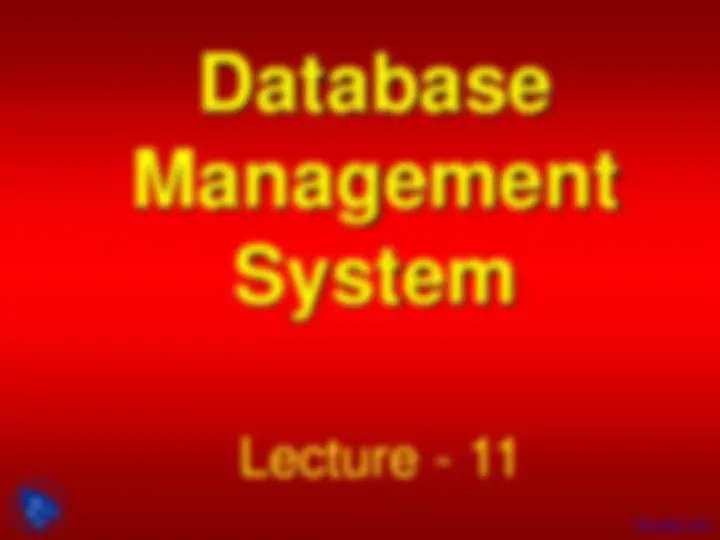


Study with the several resources on Docsity

Earn points by helping other students or get them with a premium plan


Prepare for your exams
Study with the several resources on Docsity

Earn points to download
Earn points by helping other students or get them with a premium plan
Community
Ask the community for help and clear up your study doubts
Discover the best universities in your country according to Docsity users
Free resources
Download our free guides on studying techniques, anxiety management strategies, and thesis advice from Docsity tutors
An in-depth exploration of inheritance in database management systems, focusing on the relationship between supertypes and subtypes, as well as the concepts of completeness and disjointness constraints. Additionally, it covers the use and identification of super-subtype relationships, specifying constraints, and the summary of the entity-relationship (er) data model. The er data model is a semantic data model used for conceptual database design, consisting of entities, relationships, and attributes.
Typology: Slides
1 / 27

This page cannot be seen from the preview
Don't miss anything!




















Gen/Spec relationship results inheritance between supertype and subtypes
Subtypes inherit or get all the attributes of supertype
Use/Advantage How to identify General knowledge Based on the attributes
Completeness constraint Total specialization rule Partial specialization Disjointness constraint Disjoint rule Overlap rule
To determine the subtype of a supertype instance
Place an attribute in the supertype whose value determines the subtype type
Summary of the E-R Data Model
A semantic data model
Used for the conceptual
database design
Provides three main structures
Entities, Relationships and
attributes
Regular Entity Type
Weak Entity Type
Attribute represents a property or characteristic of an ET
Attribute can be
Simple Composite Multi-valued Derived
Relationships are link or association between ETs
Relationships can be unary, binary, ternary or n-ary
Relationships are represented using diamonds linked with participant ETs
Unary, Binary and Ternary Rships